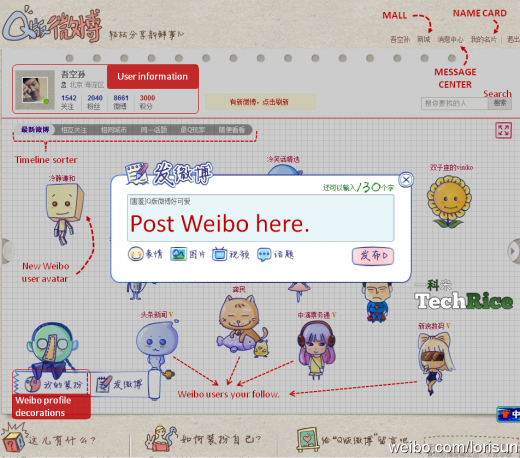
Sina’s CEO Charles Chao recently announced Sina Weibo’s plans to monetize the service, revealing how the company can take advantage of its 140 million registered users to generate revenue. A leaked screenshot caught by TechRice reveals more details on what seems to be Sina’s new “QWeibo” profiles, which feature virtual goods and eCommerce integration.
Sina has been busy adding more and more features to the Weibo platform, turning it into a complete social network experience instead of simply being a microblogging platform.
According to the screenshot that was leaked by a user on Weibo, QWeibo completely changes the original layout of Sina Weibo. Users and their followers are depicted as avatars, which is hugely popular in Asia, and it can be assumed that users will be able to purchase fancy avatars and decorative virtual goods using an online currency.
A revamped messaging system and the integration of social gaming are also expected with the release of QWeibo. Sina is also considering building an eCommerce service through Weibo.
While everything seems so impressive, tech analyst, blogger, and investor Keso commented in an interview that “CEO Charles Chao could wreck the Weibo platform by doing too much,” and I can’t help but agree. Sina Weibo, like Twitter, gets its value from keeping its simplicity, especially after it was revealed that 50% of weibos are sent using mobile devices.
Regardless, Sina is focused on the quality of the platform from a technical perspective, not rushing into an IPO, unlike other Chinese firms eager to monetize. This gives them an advantage over other Chinese social networks that experience the pitfall of rapid scaling on poorly designed infrastructure that is susceptible to failure.
Get the TNW newsletter
Get the most important tech news in your inbox each week.






